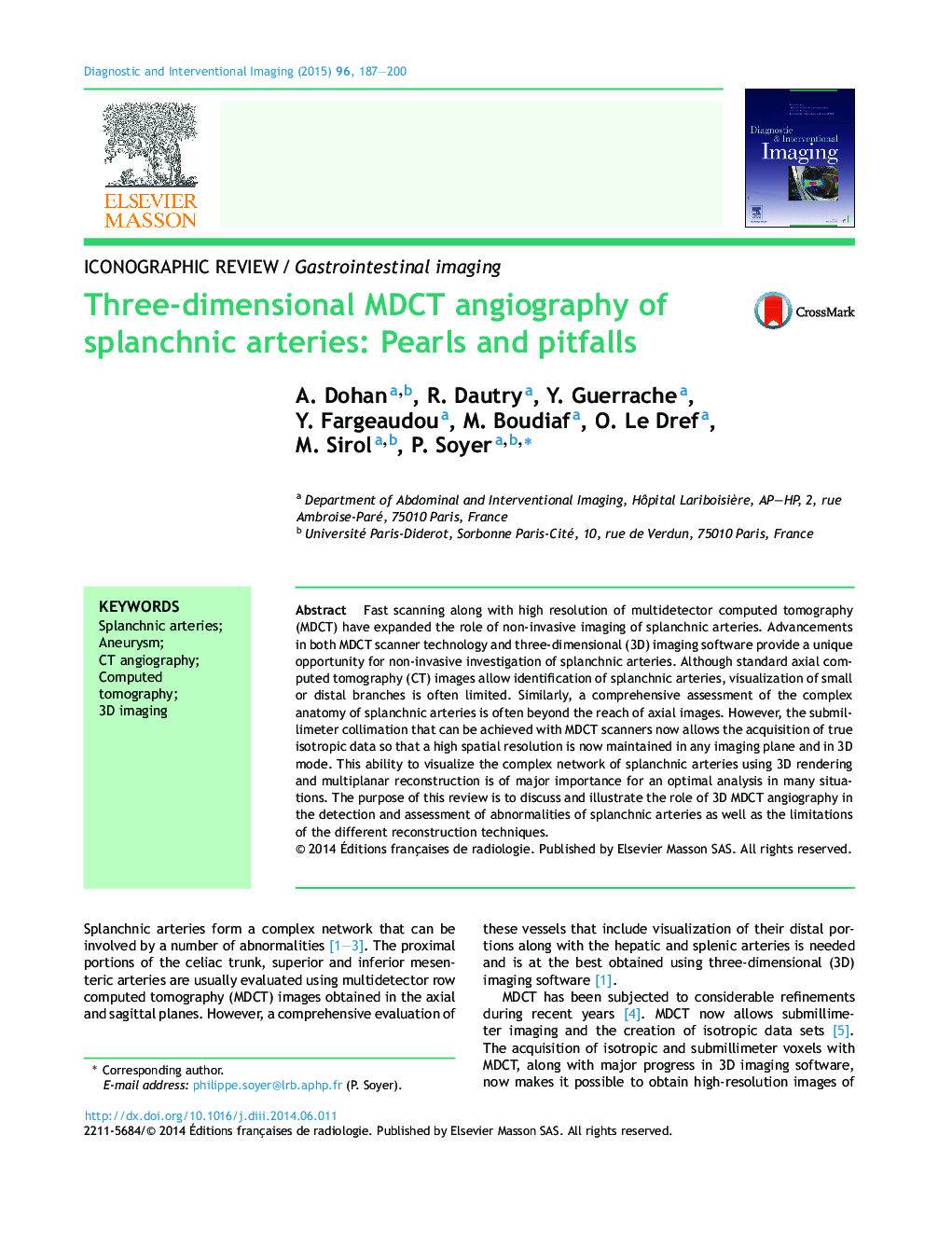| Article ID | Journal | Published Year | Pages | File Type |
|---|---|---|---|---|
| 2733702 | Diagnostic and Interventional Imaging | 2015 | 14 Pages |
Fast scanning along with high resolution of multidetector computed tomography (MDCT) have expanded the role of non-invasive imaging of splanchnic arteries. Advancements in both MDCT scanner technology and three-dimensional (3D) imaging software provide a unique opportunity for non-invasive investigation of splanchnic arteries. Although standard axial computed tomography (CT) images allow identification of splanchnic arteries, visualization of small or distal branches is often limited. Similarly, a comprehensive assessment of the complex anatomy of splanchnic arteries is often beyond the reach of axial images. However, the submillimeter collimation that can be achieved with MDCT scanners now allows the acquisition of true isotropic data so that a high spatial resolution is now maintained in any imaging plane and in 3D mode. This ability to visualize the complex network of splanchnic arteries using 3D rendering and multiplanar reconstruction is of major importance for an optimal analysis in many situations. The purpose of this review is to discuss and illustrate the role of 3D MDCT angiography in the detection and assessment of abnormalities of splanchnic arteries as well as the limitations of the different reconstruction techniques.
